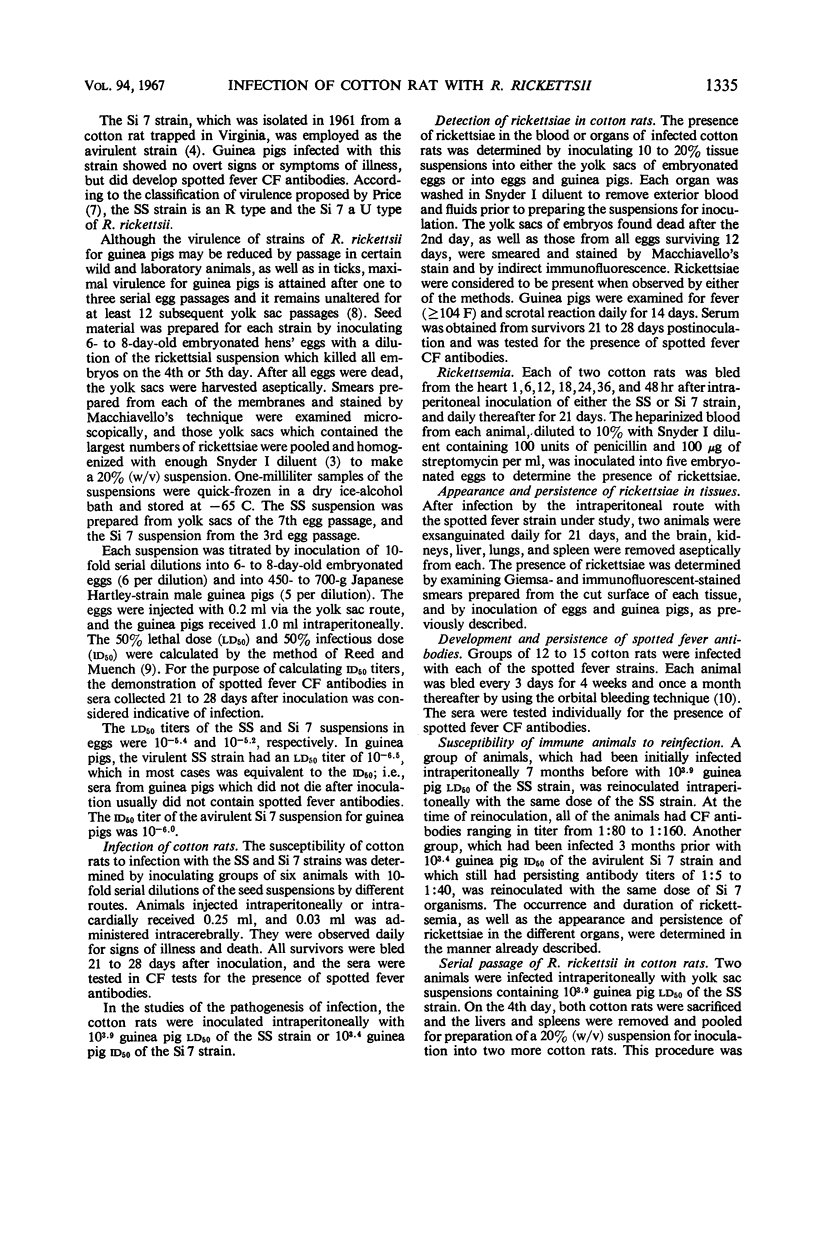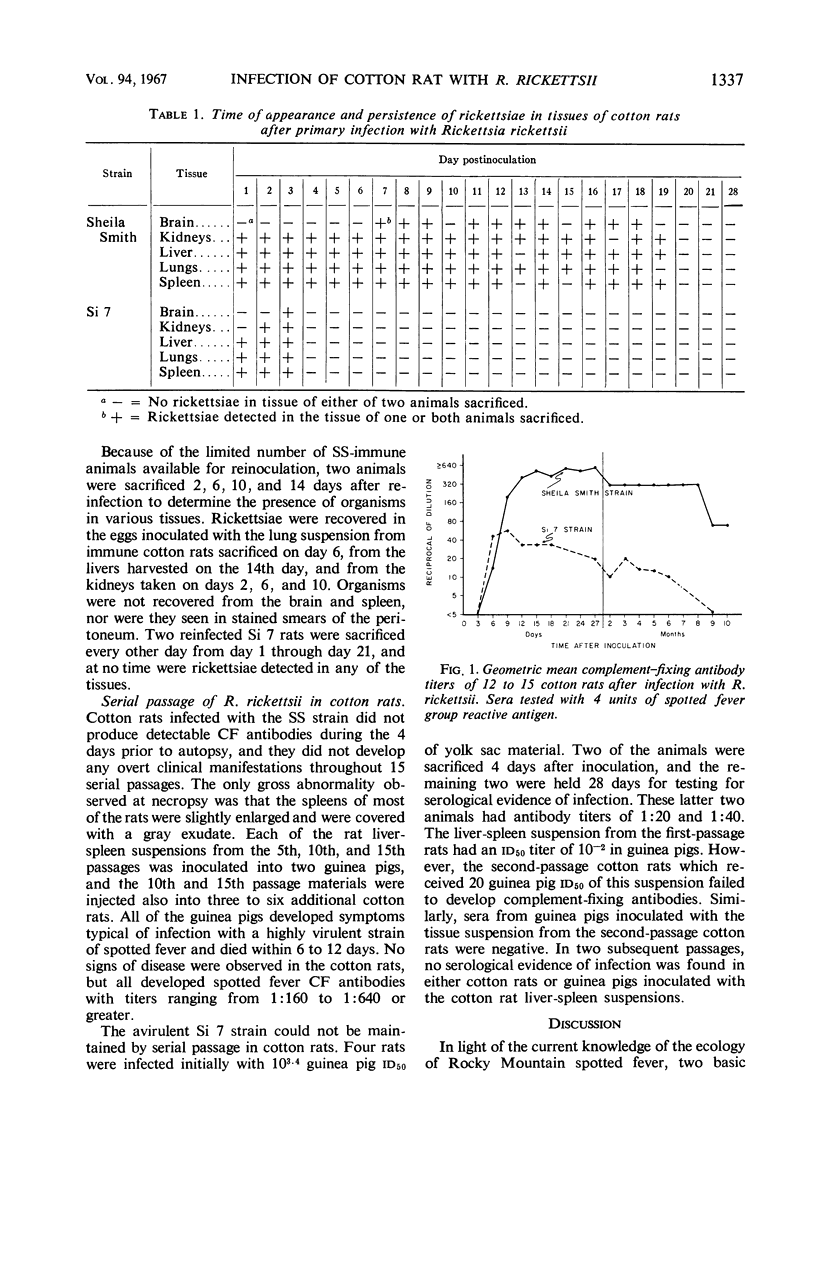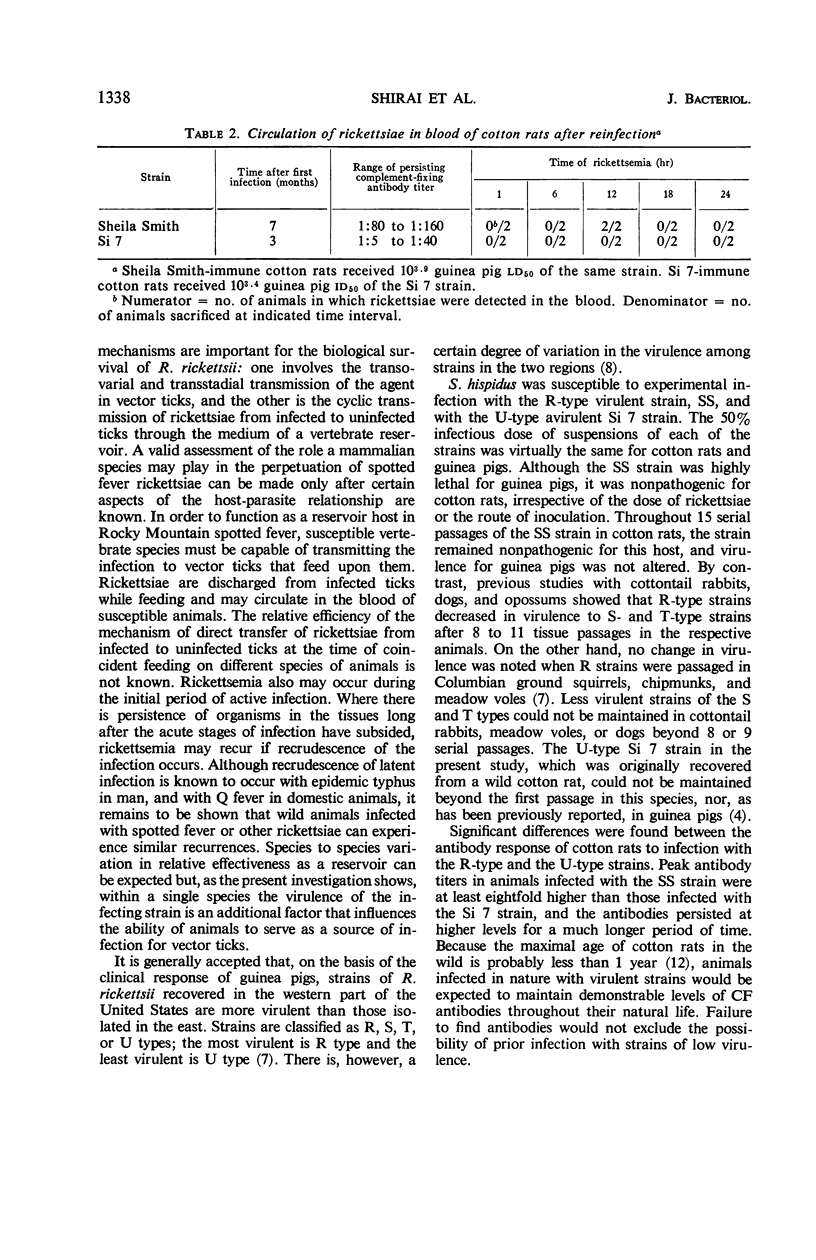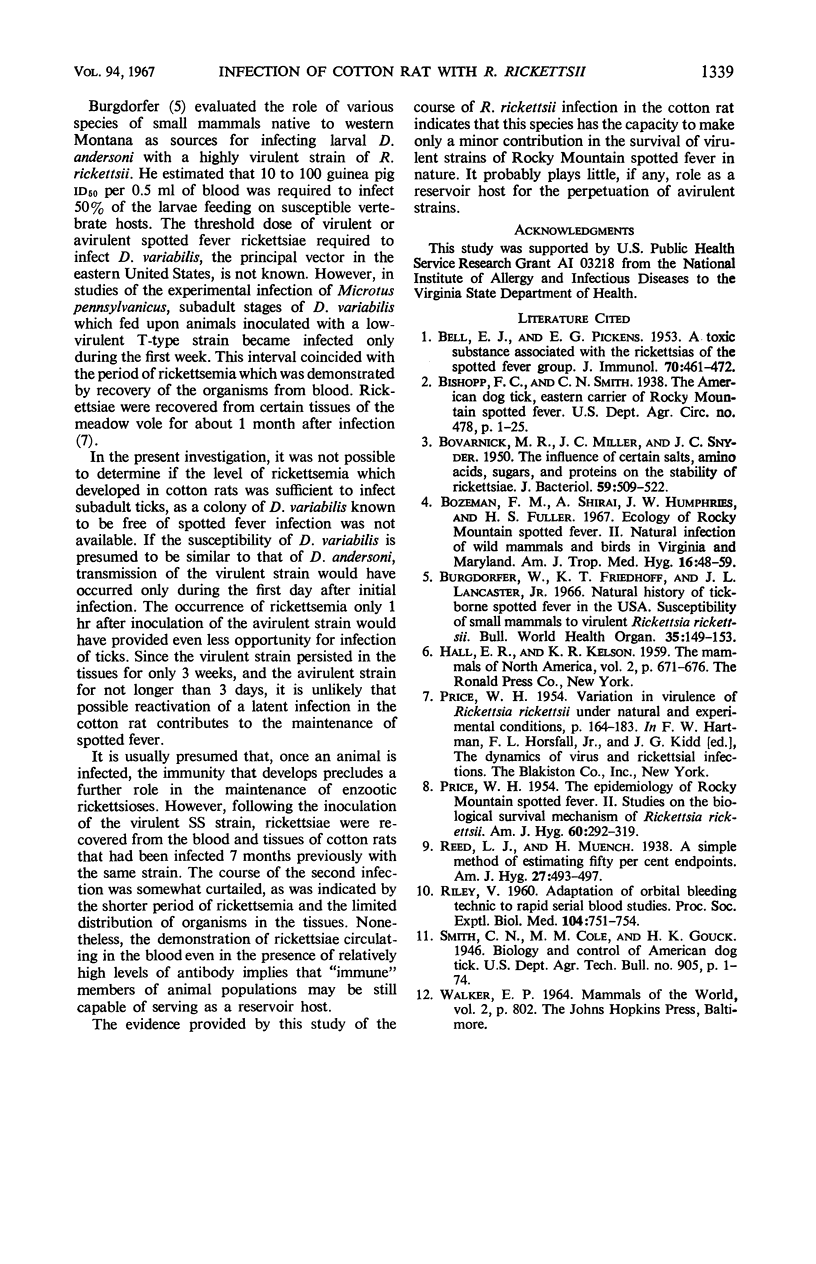Abstract
Studies of experimental infection of the cotton rat, Sigmodon hispidus, with the virulent Sheila Smith (R type) and the avirulent Si 7 (U type) strains of Rickettsia rickettsii were undertaken to evaluate the role of this native wild mammal in the ecology of Rocky Mountain spotted fever. The Sheila Smith strain, which was highly lethal for guinea pigs, was nonpathogenic for cotton rats. Serial passage of the R-type strain in the cotton rat did not alter the virulence of the agent for cotton rats or guinea pigs. The U-type strain, which was originally recovered from a wild cotton rat, could not be maintained beyond the first passage in this animal host. Rickettsemia in the cotton rat occurred over a 24-hr period after inoculation of the virulent strain but was detected only 1 hr after inoculation of the avirulent strain. The short period of rickettsemia suggests that the cotton rat probably is not an important reservoir of R. rickettsii. Specific complement-fixing antibodies developed rapidly after infection with either strain, but the antibodies evoked by the R strain attained higher titers and persisted longer. Cotton rats previously infected with the Sheila Smith strain developed rickettsemia after reinfection with the same strain, even though relatively high levels of antibody were still present.
Full text
PDF





Selected References
These references are in PubMed. This may not be the complete list of references from this article.
- BELL E. J., PICKENS E. G. A toxic substance associated with the rickettsias of the spotted fever group. J Immunol. 1953 May;70(5):461–472. [PubMed] [Google Scholar]
- BOVARNICK M. R., MILLER J. C., SNYDER J. C. The influence of certain salts, amino acids, sugars, and proteins on the stability of rickettsiae. J Bacteriol. 1950 Apr;59(4):509–522. doi: 10.1128/jb.59.4.509-522.1950. [DOI] [PMC free article] [PubMed] [Google Scholar]
- Bozeman F. M., Shiral A., Humphries J. W., Fuller H. S. Ecology of Rocky Mountain spotted fever. II. Natural infection of wild mammals and birds in Virginia and Maryland. Am J Trop Med Hyg. 1967 Jan;16(1):48–59. [PubMed] [Google Scholar]
- Burgdorfer W., Friedhoff K. T., Lancaster J. L., Jr Natural history of tick-borne spotted fever in the USA. Susceptibility of small mammals to virulent Rickettsia rickettsii. Bull World Health Organ. 1966;35(2):149–153. [PMC free article] [PubMed] [Google Scholar]
- PRICE W. H. The epidemiology of Rocky Mountain spotted fever. II. Studies on the biological survival mechanism of Rickettsia rickettsii. Am J Hyg. 1954 Nov;60(3):292–319. doi: 10.1093/oxfordjournals.aje.a119723. [DOI] [PubMed] [Google Scholar]
- RILEY V. Adaptation of orbital bleeding technic to rapid serial blood studies. Proc Soc Exp Biol Med. 1960 Aug-Sep;104:751–754. doi: 10.3181/00379727-104-25975. [DOI] [PubMed] [Google Scholar]


